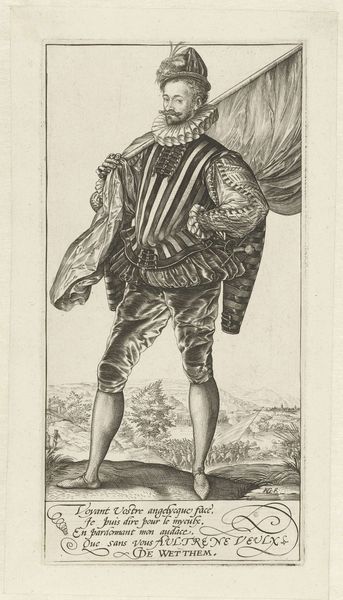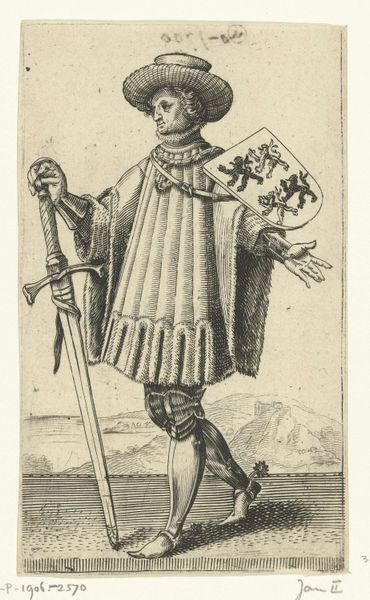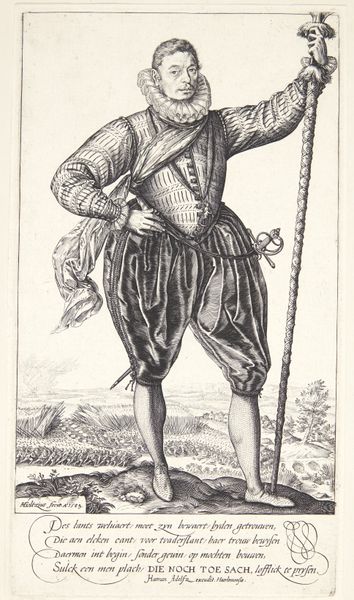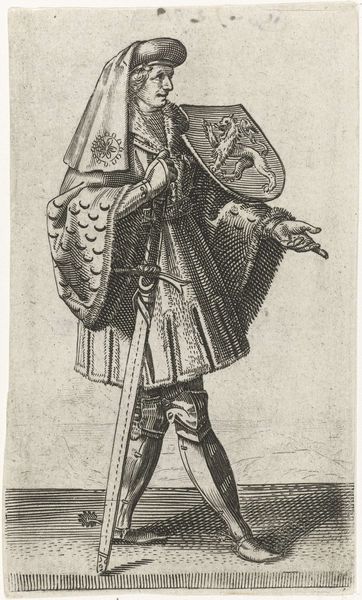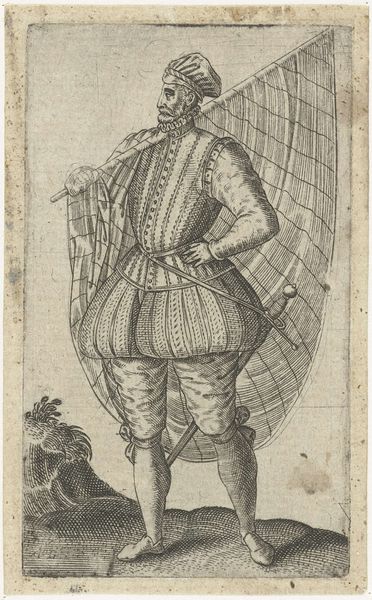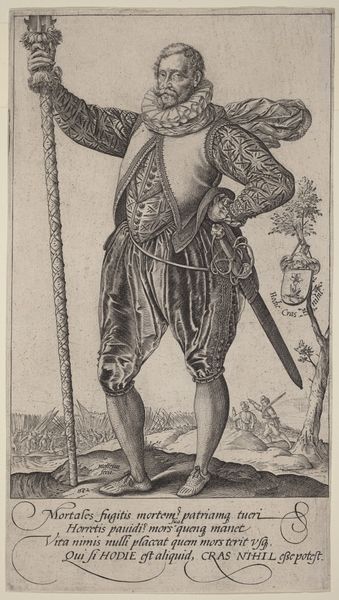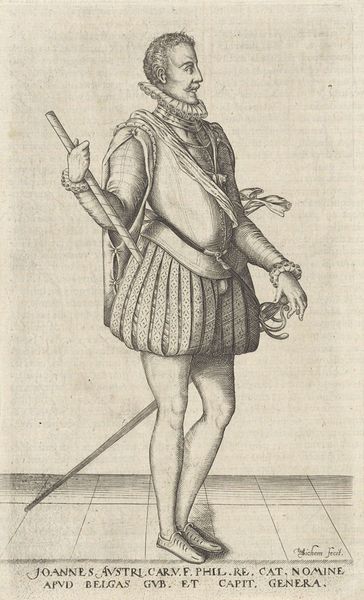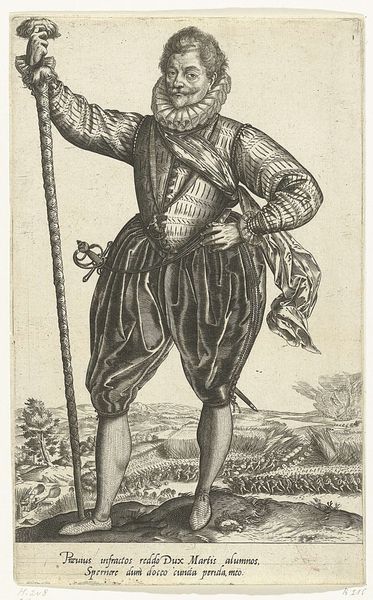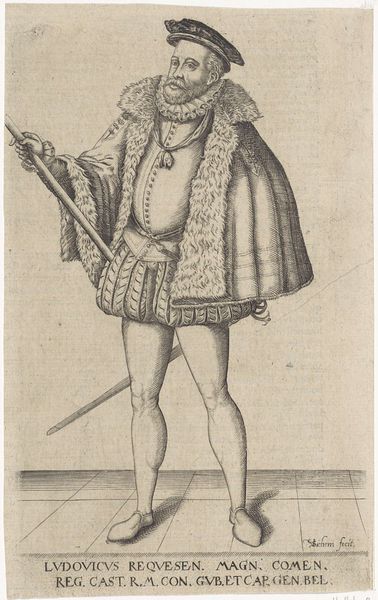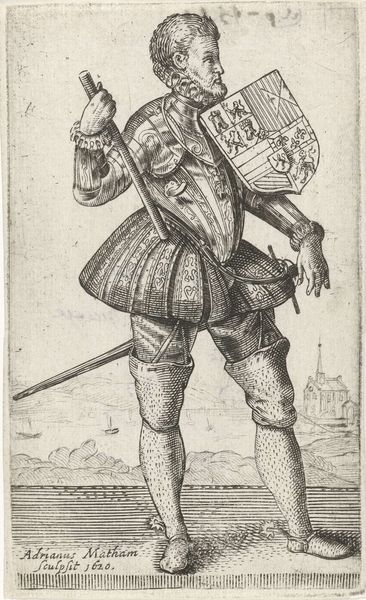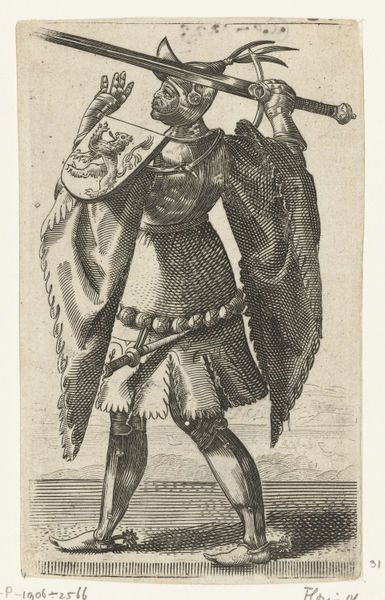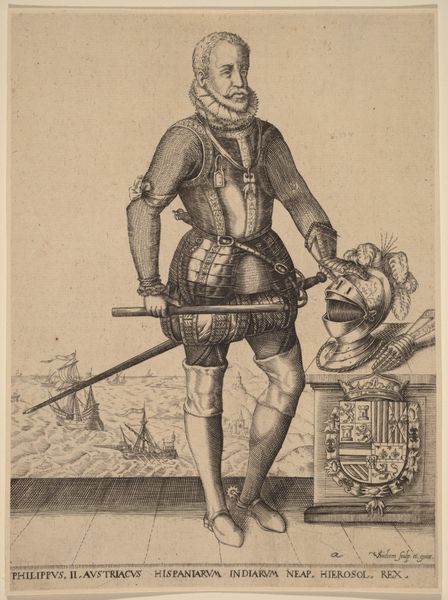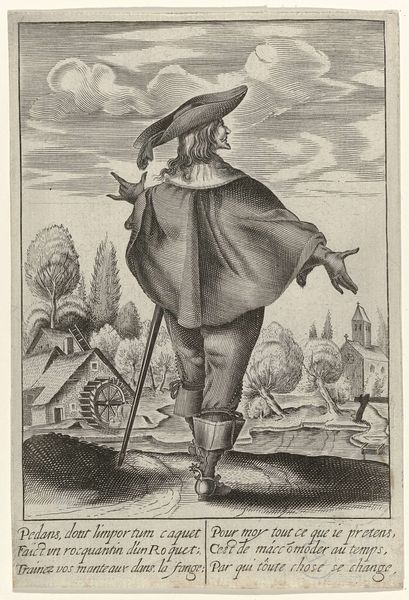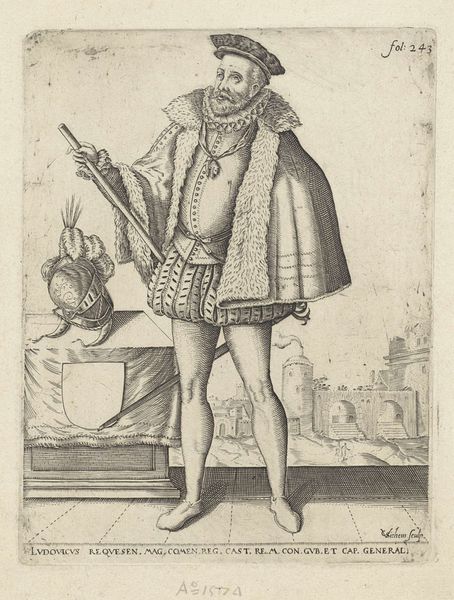
print, engraving
#
portrait
# print
#
mannerism
#
figuration
#
11_renaissance
#
northern-renaissance
#
academic-art
#
engraving
Dimensions: height 217 mm, width 125 mm
Copyright: Rijks Museum: Open Domain
This engraving of an unknown man holding a carnation was made by Wierix in the Netherlands around 1573. The carnation, or 'anjer' in Dutch, was a popular symbol in the art and culture of the time. Often, as in this image, it served as a reminder of life's fleeting nature, and the temporary qualities of earthly pleasures. Looking at the image's visual codes, it's clear that the man's dress signifies a certain social status, yet his bare feet hint at a more humble existence. The Dutch Republic in the late 16th century was experiencing a period of economic growth and social change. Artists often reflected on these shifting social structures through their work, sometimes offering critiques of wealth and vanity. Understanding this image better requires us to look at the era's literature, popular songs, and emblem books. The Rijksmuseum's archives, along with other collections of early modern prints, would be invaluable resources in deciphering the cultural context. The meaning of art is never fixed; it evolves as we learn more about the society that produced it.
Comments
No comments
Be the first to comment and join the conversation on the ultimate creative platform.
